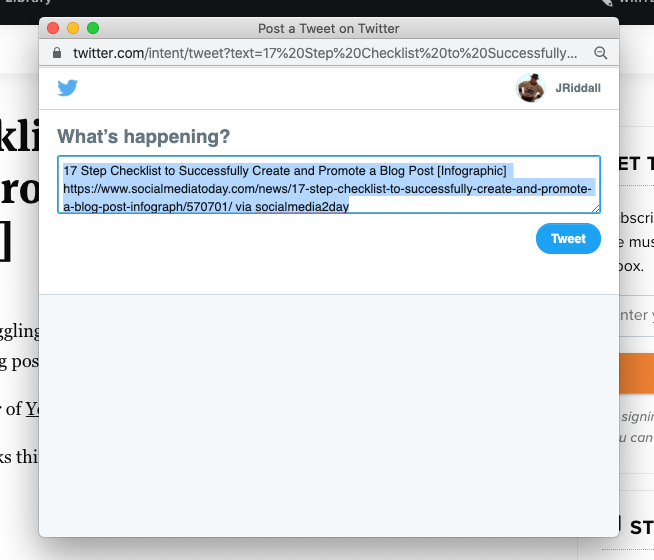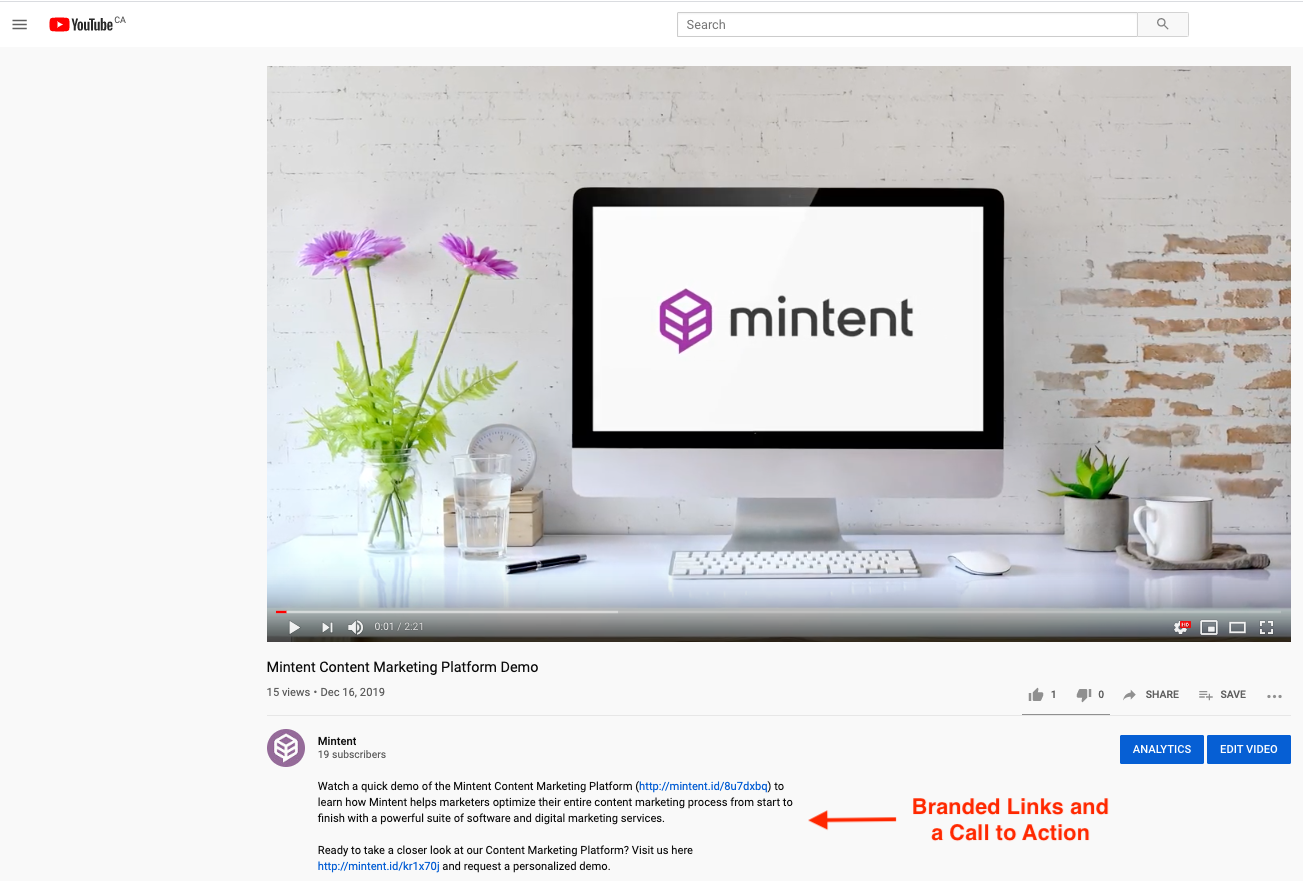Do you want to drive more engagement and traffic via the social channels you are distributing your content to?
Of course, you do.
However, developing and managing effective modern content marketing and social media campaigns are easier said than done.
With the dawn of a new decade, marketers continue to experience challenges executing strategic and thoughtful digital marketing strategies – in particular, bringing together content marketing and social media.
It never has been, nor will it ever be, enough to just publish a bunch of content and haphazardly share it out via the standard social channels.
In fact, as more organizations create more and more content, it only becomes more important to take time to ensure a solid structure and process is in place for
Below are five ways you may be sabotaging your content marketing and social media efforts.
These are typical pitfalls marketing departments fall into when rolling out multi-channel organic or paid content campaigns.
1. Sharing Your Quality Content with No One
With all the recent and ongoing hype around the importance of content marketing, it can be easy to assume the way to win is to just start creating and sharing as much rich, quality content as possible.
However, there is little point creating content of any level of quality if adequate time has not been spent identifying who will consume the content and where this audience can be found.
The first mandatory step in the planning and development of any successful content campaign must focus on developing comprehensive audience personas.
Identify who you expect to read, like, and share your content.
- What are their likes, dislikes, and emotional triggers?
- What questions are they looking to answer?
- Where and when are you most likely to find these people consuming content online?
Once you’ve identified who and where your audience is, a significant amount of time needs to be spent gaining their trust.
If the stated goal is to have members of your audience like, share, and otherwise endorse your content (and by extension, your brand), you need to convince them you are indeed the authority you’re aiming to become.
One strategy for building an audience is to:
- Identify/follow influencers in your space.
- Engage with them.
- Share their content with an eye toward future reciprocation.
Any trusting relationship will naturally require ample time to develop.
In time, if others feel your content has value or is otherwise entertaining, they will provide the validation you seek via a like, comment, share, or click.
2. Making Sharing Difficult
As a consumer and liker/sharer of content myself, one of my pet peeves is not being able to easily share something I’ve read, which I feel would benefit some of my followers.
Highly visible share buttons within blog posts or other content templates are simply a given and yet, they are often nowhere to be seen.
There are also several plugins available which will enable readers to share quotes or other highlighted snippets of text directly from within a post.
While I applaud the existence of share buttons within the content, I cringe at the absence of the post title, the author’s social handle and/or the brand account’s handle in the message being shared socially.
This is typically a simple plugin configuration issue.
Why would a brand or author not want to include their contact info with their shared content if one of their primary goals is building their audience?
Why publish content if it’s effectively being shared anonymously?

On a related note, if you believe in the value of your content and would like it to be shared, why not ask?
Don’t be shy about including a call to action in your posts.
If you’ve indeed established a trusting relationship and you’ve produced content others can benefit from, go ahead and urge your readers to “pass it on.”
3. Sending Messages Which Lack Consistency
This may be common sense, but all too often, particularly when content teams are siloed (e.g., social team, blog content team) the consistency of messaging from social to primary content can get garbled.
Specifically, prior to publishing, one person or group should review social posts and the content they link to for consistency in terms of tone, keywords, hashtags, and calls to action.
If any of these are noticeably out of sync, they can leave a consumer confused or annoyed at having wasted their time clicking on one message and then seeing something different, or not what they expected.
If this happens too many times, the brand will begin to lose the trust and the authority you’ve worked so hard to develop.
4. Using the Same Messaging on All Channels
Several social media distribution tools are available to help marketers save time sharing links to the same content across multiple channels.
While this efficiency is undoubtedly welcomed and financially justified, it should not come at the expense of producing the right messages for the right audiences.
And please, please do not cut and paste the exact same message in every channel.
Every brand has some consumers who follow them everywhere and this is simply not a good look.
Each social network delivers content in its own way and, as such, attracts different consumers who consume content differently.
For example, Twitter’s format and history lends itself to short, concise messaging, while Facebook posts can be much longer and more in-depth.
Instagram and YouTube are both naturally image and video-driven, but they also offer text, hashtag, link and call to action opportunities, which should not be overlooked.

Using Instagram as an example, the standard organic post prompt has become “Click link in the bio” as organic links are not clickable.
However, what if you included a memorable branded, shortened link (e.g., brand.com/offer) as an alternative to clicking. In other words, why not try “Click link in the bio or visit brand.com/offer.”
You may not see an overwhelming number of consumers remembering to visit brand.com/offer, but some will and it certainly can’t hurt to include additional branding in your posts.
All this to say, ideally, you will use unique, appropriately formatted messages in each social channel you share content on.
5. Failing to Use Data to Optimize
The rise of digital marketing and social media has undoubtedly been buoyed by marketers being able to use analytics to measure audience engagement and seek out the all elusive ROI.
There is an opportunity to measure each message and the engagement of each link shared to each channel as unique.
As noted previously, unique links may also be specifically customized by brand, campaign, offer and/or channel (e.g., brand.com/campaign-offer-channel).
Real-time analytics enable agile marketers to quickly understand and react to content performance.
This becomes particularly important when the social channels being leveraged are both organic and paid.
Multi-channel campaigns require a top level view of all engagement.
The quicker you can identify what is not working and focus more attention on what is, the better.
The days of waiting until a campaign has concluded to decide what to do next are over.
Bonus
Related to #5, a content campaign does not end once the content has been distributed.
The root of social media is conversation.
Your initial post(s) are simply conversation starters.
Grow your audience and your authority by paying attention and engaging with your readers as they engage with your content.
Likewise note and follow related trending topics and hashtags on social media, where you may be able to gently introduce the quality content you’ve just created.
The Devil Is in the Details
Any successful content campaign requires deliberate strategic and tactical planning from audience definition and development through to content performance tracking and ongoing optimization.
Without an appropriate level of attention to detail, as described above, you will simply be left with random acts of marketing – shouting into the void with little to no chance of having your content actually read, liked, shared, clicked by humans or indexed and ranked by search engines.
In which case, you’ve wasted a whole bunch of time, energy, and money.
More Resources:
- 10 Reasons You Can’t Be Afraid to Experiment & Fail with Your Content
- Why Content ‘Tactics’ Fail You & How to Become Relevant
- Avoid These 5 Blog Strategy & Creation Mistakes
Image Credits
All screenshots taken by author, February 2020





